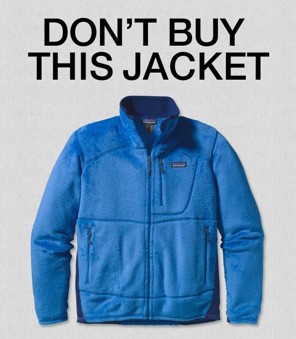
Co-written with: Ilaria Pasquinelli, Twitter: @ilaria78, international marketing consultant for the textile and fashion industry.
With the end of the year upon us, we tend to think of the past year and what the upcoming one holds for us.
With H&M recently announcing the launch of a new clothes takes-back and recycling scheme – accepting clothes from any brand, and in any condition – starting from January 2013 at stores in 48 countries, I am prompted to look at other interesting consumer engagement campaigns we have seen in the past few months and years.
The proliferation of these types of campaigns is certainly due to the awareness that the biggest (environmental) impact is at a consumption stage. The brands’ goal is also to establish more than a shopping relation with customers. People need relations in their lives, and solid relations are based on the understanding of people and their needs, both practical and emotional.
But beyond that, it happens that many initiatives are around swapping and recycling, and we know that closed loop systems and processes are an important area of research for fashion businesses in the present. After all, as one of my favourite adverts from HSBC says: “In the future, there will be no difference between waste and energy”.
In this sense, hereafter my pick of popular campaigns, all of which have been highly successful:
Campaigns aimed at reducing amounts of discarded garments
- Puma’s Bring Me Back campaign has a lot in common with H&M’ take back scheme. Puma’s activities actually precede H&M’s as it has been launched in the first half of 2012. Both, shoes and garments from any brand are accepted, and are then either recycled or upclycled by I-Collect, the same organisation that collaborates with H&M.
- When: Launched in April 2012 in Germany
- Rewards: “Feel good factor” and the possibility to tell the story (or stories) of your garment/s on Puma’s website.
- Impact: Too early to say
- Marks & Spencer’s Shwopping campaign builds on the Clothes Exchange campaign, a much earlier effort launched in collaboration with Oxfam in 2008.
- When: Launched in April 2012
- Rewards: Weekly £100 gift card prizes and points (linked with prizes) earned on Facebook to spread the word.
- Impact: 3 million garments donated to Oxfam in 2012 (11 million garments donated since 2008).
- Levi’s Care for our Planet campaign invites people to donate used garments to the US-based charity Goodwill. A European version is apparently in the makes.
- When: Launched in January 2010
- Rewards: Initially, a 30% discount on the retail price of new garments.
- Impact: unknown.
Campaigns aimed at reducing the impact of caring for garments
- Levi’s Care to Air design contest, is a crowd sourcing contest seeking out innovative and sustainable ways to air dry clothes. Nearly 140 designs from around the world were submitted.
- When: launched in June 2010
- Rewards: the chance to win up to $10,000 in prizes
- Impact: unknown.
- Marks & Spencer’s Think Climate Wash at 30°C pledge invites customers to wash at lower temperatures by adjusting indications on the garments’ labels accordingly.
- When: Launched in 2007.
- Rewards: Save energy and costs.
- Impact: Increased the levels of 30°C washes carried out by their customers from 23% to 31%, saving around 25,000 tonnes of CO2 every year.
Campaigns aimed at consuming more responsibly
- Patagonia’s Don’t Buy This Jacket campaign, which builds on the 2004 Don’t Buy This Shirt Unless You Need It campaign. As it’s predecessor, also the new campaign is part of their Common Threads Initiative.
- When: Launched in 2011.
- Rewards:‘Feel good’ factor that also shares the brand’s values and goals.
- Impact: 13,649 pieces of garments repaired between January and September 2012; 326 items sold through Patagonia’s E-bay online platform until today.
These campaigns have also had very positive effects on the equity of the above mentioned brands.
Just to give examples:
In 2010 M&S was perceived the most sustainable brand in the world; and Puma is considered a pioneer brand by peers thanks, mainly, to its Environmental P&L Account.
I am sure we will see more in 2013. will brands create coalitions like they do to solve problems at sourcing levels? Surely, fashion businesses will have to be creative in order to engage and reward consumers and influence what they do with the garments once they bring them home.
Rewards are very important when social norms need changing. Research from the Kellog School of Management states that: “You start out by rewarding people who move to the culture you want to establish. Then once you have it, you start to punish those who haven’t made the change.”

